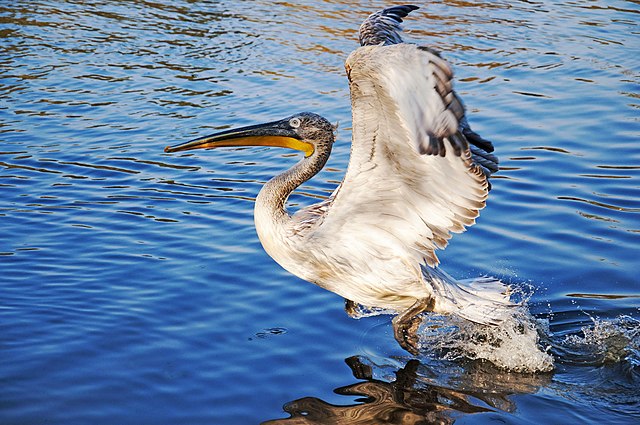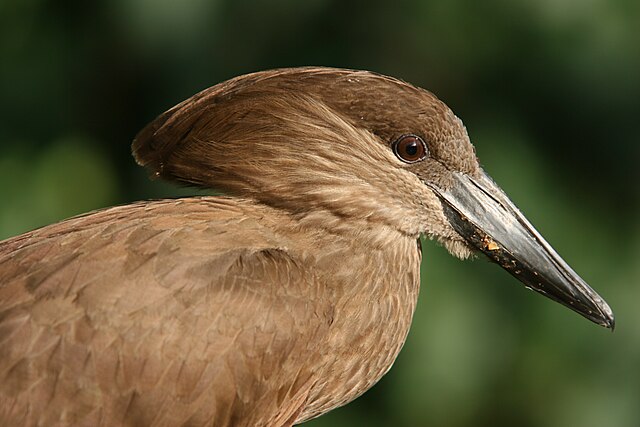The Dalmatian pelican is the largest member of the pelican family, and perhaps the world's largest freshwater bird, although rivaled in weight and length by the largest swans. They are elegant soaring birds, with wingspans rivaling those of the great albatrosses, and their flocks fly in graceful synchrony. With a range spanning across much of Central Eurasia, from the Mediterranean in the West to the Taiwan Strait in the East, and from the Persian Gulf in the South to Siberia in the North, it is a short-to-medium-distance migrant between breeding and overwintering areas. No subspecies are known to exist over its wide range, but based on size differences, a Pleistocene paleosubspecies, P. c. palaeocrispus, has been described from fossils recovered at Binagady, Azerbaijan.
Dalmatian pelican
Dalmatian pelican (Pelecanus crispus) – more than a pink pelican, distinguished by the absence of pink tones in the plumage. On the head and the upper side of the neck are long and twisted curly feathers which form the likeness of a mane. It takes off fairly easily, pushing the water with both feet, but when it has a catch in its throat bag, gets up with difficulty.
Egg, Collection Museum Wiesbaden
Image: Dalmatian pelican (Pelecanus crispus) in flight Danube delta
Pelicans are a genus of large water birds that make up the family Pelecanidae. They are characterized by a long beak and a large throat pouch used for catching prey and draining water from the scooped-up contents before swallowing. They have predominantly pale plumage, except for the brown and Peruvian pelicans. The bills, pouches, and bare facial skin of all pelicans become brightly coloured before the breeding season.
Pelican
Pelicans at National Zoo, Bangladesh
Hamerkop
Shoebill








